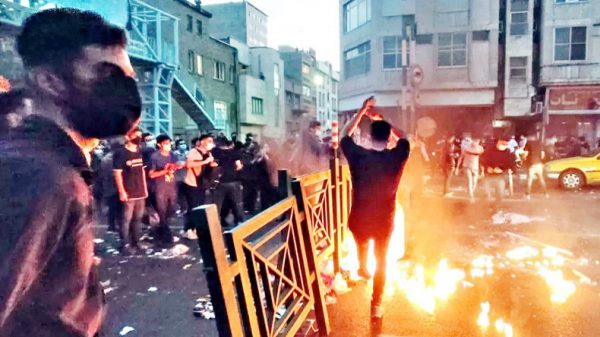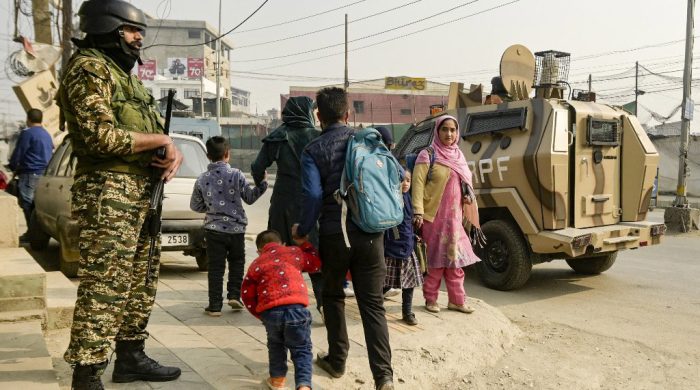The unfolding case of Iran

- Update Time : Tuesday, February 7, 2023
- 83 Time View

If we follow Marx that ‘material force must be overthrown by material force’, we can anticipate that though ‘refolutions’ create informal democratic spaces, they may not result in fundamental political change, writes Amin Bozorgiyan
Today radical opposition can be considered only in a global framework. Taken as an isolated phenomenon, its nature is falsified from the start.
— Herbert Marcuse,
The Problem of Violence, and the Radical Opposition
MANY Iranian activists both inside and outside the country are calling the recent mass movement against the Islamic republic a ‘revolution.’ But what does a revolution look like today? The uprisings in Iran are unfolding in a neoliberal age as did the revolutions of the Arab Spring. The Arab Spring inspired scholars to theorise the elements and style of revolution in a neoliberal age. These revolutions tend to be peaceful, process-oriented, adaptable, and leaderless. Finally, they are more likely to result in changes in popular sensibilities than in political transformation.
This article reconstructs the characteristics of revolution in neoliberal regimes. It summarises what the sociologist Asef Bayat describes as ‘revolution without revolutionaries’, before drawing on Bayat’s schematic to help make some sense of the revolutionary moment in Iran.
The Arab Spring
In Revolution without Revolutions, Bayat makes a distinction between ‘revolution as change’ and ‘revolution as a movement.’ The former is when revolutions force the state to change; the latter is when popular sensibilities change. In his analysis, the Arab Spring represented more the latter rather than the former. Those revolutions share four key characteristics:
Human rights and legitimacy: They are deemed ‘legitimate’ by international institutions and in the court of global public opinion to the extent that they adhere to the liberal human rights regime developed after World War II. Within this ideological framework, armed conflict and revolutionary violence have been largely deemed ‘illegitimate’, though with notable exceptions. At the same time, a human right centered approach to change embraces the reform of existing political institutions as opposed to more radical political-economic transformations, such as those envisioned by leftist movements in a previous era. There is a widely held belief that radical change could lead to more misery, but people do want to change the government and more than that to change how life is governed. The possibilities of change are limited in neoliberal regimes.
Leaderless revolutions: They lack formal leadership. Although there were local leaders in the Arab Spring, there were no charismatic, national leaders like Lech Walesa, Vaclav Havel, or Ayatollah Khomeini. Without leaders, revolutionaries had fewer opportunities to negotiate with the government and the ruling class. They had no choice but to stay on the street until the sovereign fled the chaos and disruption created on the street. Moreover, these leaderless movements could not form a solid organisation or single command structure, which made their ability to demand a clear transition of power after the fall of their dictators much more difficult.
Horizontalism: Without leaders, these movements can adapt quickly to changes on the ground. However, they have also been marked by greater fragmentation, with competing ideas and voices on both a strategic and ideological level. As we saw with the Arab Spring, this horizontalism was further facilitated by digital technology, which allowed more people, even those outside national boundaries, to participate. This also caused tension and conflict.
Lack of ideological vision: Without leaders and with a growing plurality of voices, the revolutions of the Arab Spring lacked clarity about their objective. By contrast, during the 1979 Iranian Revolution, Marxist and Shia individuals and organisations articulated a clearer vision of what they wanted, grounded in shared values and a shared perception of the future state. The neoliberal era, by contrast, is post-ideological. In practice, this means many on the streets are treated as leaders of the revolution even if they do not articulate a single ideological vision for their future state. Meanwhile, intellectuals in these societies, who could possibly offer such clarity, have lost their significance, or are even actively condemned by those on the streets.
Bayat notes that these revolutions brought unprecedented numbers out into the streets, were inclusive, created strong social bonds, and were far more democratic than previous revolutions. Despite these strengths, they were not powerful enough to make long-term political changes. Bayat calls them ‘refolutions’, revolutionary movements that push for reform. Unfortunately, most of the ‘refolutions’ in the Arab Spring did not achieve their more modest goals.
With neoliberalism, revolutions have been de-radicalised while an economic ruling class maintains control of macro-political relations. Reform will not dethrone them. If we follow Marx that ‘material force must be overthrown by material force’, we can anticipate that though ‘refolutions’ create informal democratic spaces, they may not result in fundamental political change. Or rather, we can see ‘revolution as a movement’ without ‘revolution as change.’
Bayat’s framing can help us understand what we are seeing in Iran today.
Revolution without idea of revolution
FIRST, Iran’s current uprising does not have a charismatic leader. On the one hand, it is more likely to be democratic because internal disagreement is not subsumed under a single personality. On the other hand, it may lack the overall organisation necessary for a political revolution. Paradoxically, a democratic revolution is less likely to achieve its objectives.
Second, from a glance at published statements, people on the streets and their network of supporters have embraced human rights, non-violence, and pluralism as ideals. The revolution is nonetheless post-ideological since a single ideological vision is not holding it together.
Since there is no leader or ideological vision, multiple online personalities have vied to claim leadership. In contrast to Egypt or Tunisia, they have not been able to mobilise people en masse. The lack of leadership and vision has resulted in political fragmentation. Together, the lack of leadership and vision has resulted in changes in popular sensibilities but not political change.
Thus, even though many people have called the uprising a ‘revolution’, it is more precisely what Bayat names a ‘revolution as movement’ rather than the more radical ‘revolution as change.’
Despite these challenges, the revolutionary situation in Iran shows tremendous promise.
We have seen a change in popular sensibilities at odds with the non-democratic state. The centrality of women’s rights and freedoms has inspired a ‘refolution’ that has brought together disparate organisations and constituencies, including workers, students, and ethnic minorities. These factors, along with the history of revolution in Iran, conjure a different vision of the future. One day, this ‘refolution’ may be looked to as part of a ‘pre-revolutionary’ moment.
Jadaliyya, January 31. Amin Bozorgiyan is a PhD candidate and researcher in department of anthropology at University of Côte d’Azur, France.

























